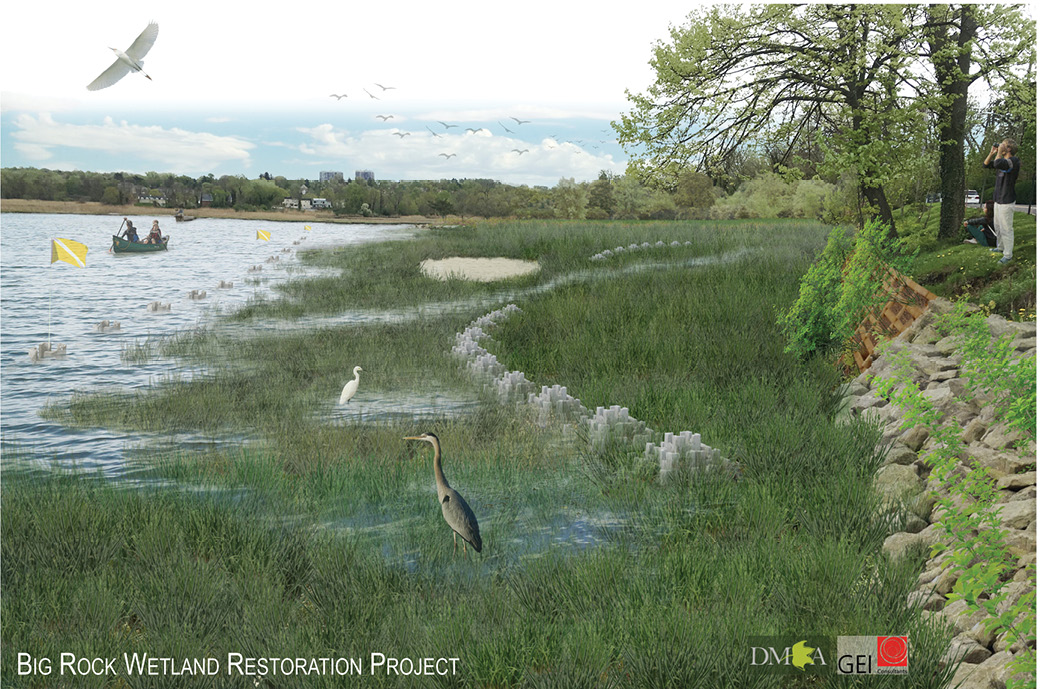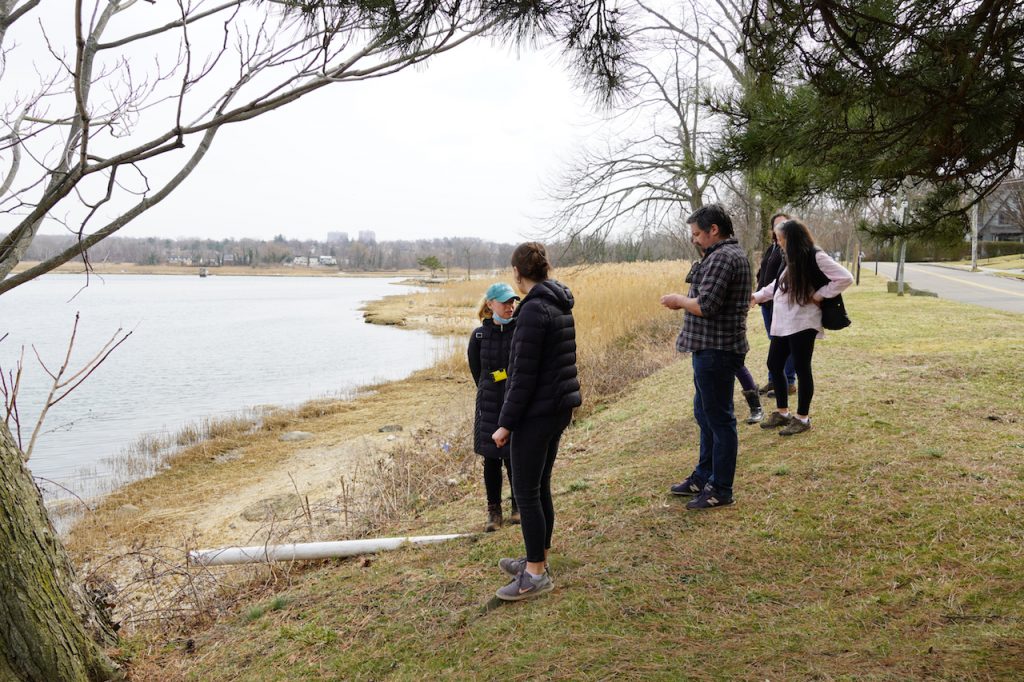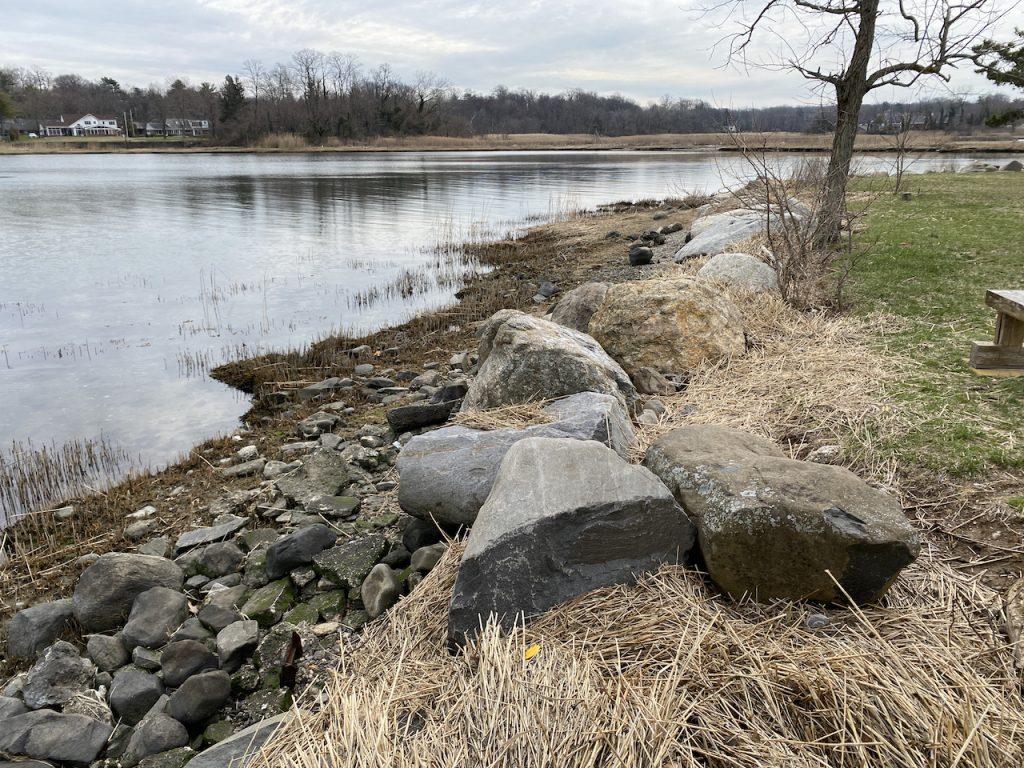By Melissa Pappas and Katie Friedman

What are living shorelines? How can they save our coastal communities? Save the Sound’s New York ecological restoration program manager, Katie Friedman, shares her knowledge of this nature-based solution.
Q: Can you explain the concept of a living shoreline and its purpose?
Katie: In an urban area where we want to stabilize the coast or protect infrastructure from high wave energy or erosion, people typically build hard structures out of unnatural materials—think concrete seawalls and bulkheads. Living shorelines, in contrast, use nature-based features which may include plantings of native marsh grasses and shrubs, oyster reef habitats, and bundles of wood. The concept of a living shoreline is to work with natural features that can adapt to changes over time. Wetland marshes and oyster reefs grow over time, adapting to sea level rise while absorbing wave energy. A hardened shoreline isn’t able to adapt to changing conditions and can actually redistribute wave energy contributing to erosion in neighboring coastal areas.

Q: Other than protection from erosion and sea level rise, are there other benefits of a living shoreline?
Katie: They provide habitat for coastal and marine organisms, much of which is being lost in our region. Marshes and oyster reefs also help improve water quality and clarity, and native plants found in marshes pull carbon from the atmosphere as they photosynthesize.
Q: Are there instances where a living shoreline is not the best option? If so, what’s the next best thing?
Katie: Not every location will be suitable for a living shoreline and even suitable sites will vary in their components, which may limit the benefits they can provide. A feasibility study, which includes the analysis of site conditions including wave energy, available space, and surrounding environmental factors, helps us determine what can be done at each site. However, even at sites that cannot support a more natural living shoreline, a living seawall made of eco-friendly concrete with different textures and crevices, supports both biodiversity and helps to dissipate wave energy better than a typical, flat seawall. There are always options to make shorelines as close to natural as possible.

Q: Why should people who don’t live on the coast care about this kind of restoration?
Katie: The benefits of improving our coastal habitats trickle down to the rest of the Long Island Sound ecosystem. Restoring salt marshes and oyster reefs support recreational fish populations and water quality at local beaches and harbors. Sea level rise affects shared infrastructure such as wastewater treatment facilities which will become inundated when sea levels rise. Everyone will be affected in one way or another by sea level rise.
Q: Can you tell us about the living shoreline project you are working on and what excites you most about it?
Katie: We are working on a project with the Douglas Manor Environmental Association in Queens where their local community has been experiencing coastal erosion for many years. To combat this, we are restoring four acres of salt marsh to improve the aquatic habitat and protect the shoreline from further erosion. We are also installing oyster castles which are essentially eco-friendly, concrete Lego blocks that will undercut wave energy and provide oyster habitat. What’s really exciting about this project is the amount of community engagement that has been present from the start. This is also a relatively new technique being established in the region. There are only a handful of completed living shoreline projects in New York City, so this is a great opportunity for Save the Sound to expand on these efforts and learn from previous successful projects.
Q: How can the public help advocate for these kinds of projects?
Katie: There is a Living Shorelines Bill (S8828A) that Save the Sound is working on with New York State Senator Shelley Mayer to strengthen the NY State Department of Environmental Conservation’s ability to prioritize living shorelines over hardened shorelines when approving project permits. Residents have an opportunity to encourage their Assembly member to pass this bill. Your voice can help living shorelines become the preferred alternative for shoreline protection. ■
